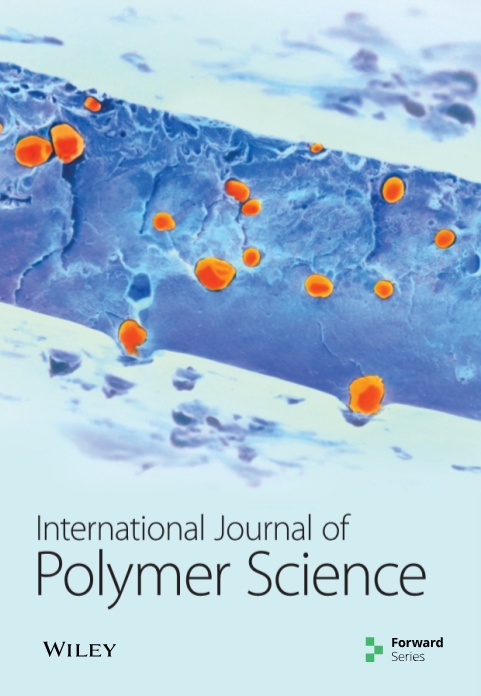“四合一”中不同材料组合对下颌骨及修复体应力影响的有限元分析
IF 4.4
4区 化学
Q2 POLYMER SCIENCE
引用次数: 0
摘要
背景。固定假体通常使用“All-on-four”技术,将四个植入物插入颌骨,并用框架支撑它们。钛通常用于制造“全上四”部件,因为它具有优越的机械性能;然而,它有一些缺点,如美观性受损、铸造问题、应力屏蔽以及与成像技术不兼容。这些缺点促使研究人员寻找聚合物等替代材料。近年来,新型高分子材料PEEK在大多数牙科领域发挥了重要作用,因此,它可以作为一种替代生物材料来克服钛的缺点。骨密度预计会影响“All-on-four”材料的选择。目的。本研究利用三种材料组合,在正常骨密度和低骨密度下,应用有限元调查来评估“All on four”中骨组织和假体部件的应力。这些组件是钛(1型),钛/PEEK(2型)和PEEK(3型)。材料和方法。采用固定假体构建三维下颌模型,在300 N单侧力作用下刺激三组材料。计算假体部分和粘膜的von Mises应力,同时计算骨组织的最大和最小主应力/应变,因为骨组织具有脆性和延性。此外,提取假体的位移来检查假体的稳定性。结果。与1型相比,2型和3型减少了对框架、种植体、基台和骨组织的应力,但增加了粘膜应力。在低密度模型中,推荐使用3型,以减少骨组织的应力/应变,减少种植体位移,避免骨衰竭,增加假体的稳定性。结论。骨密度影响“全对四”组合的选择。此外,未来还需要进一步研究PEEK种植体和基台。本文章由计算机程序翻译,如有差异,请以英文原文为准。
Finite-Element Analysis of the Effect of Utilizing Various Material Assemblies in “All on Four” on the Stresses on Mandible Bone and Prosthetic Parts
Background. Fixed prostheses often utilize the “All-on-four” technique, in which four implants are inserted into the jaw bone, and a framework supports them. Titanium is usually used in the fabrication of “All-on-four” parts, due to its superior mechanical properties; however, it has drawbacks such as aesthetic impairment, casting issues, stress shielding, and incompatibility with imaging techniques. These drawbacks have motivated researchers to find alternative materials such as polymers. Recently, the new polymeric material PEEK has a major role in most areas of dentistry, and therefore, it can represent an alternative biomaterial to overcome the drawbacks of titanium. The density of bone is expected to influence the choice of “All-on-four” materials. Purpose. This research applied finite-element investigations to evaluate the stresses on bone tissues and prosthetic parts in “All on four,” utilizing three assemblies of materials, in normal and low bone densities. These assemblies were titanium (Type 1), titanium/PEEK (Type 2), and PEEK (Type 3). Materials and Methods. A 3D Mandibular model was constructed with a fixed prosthesis, and three assemblies of materials were stimulated, under 300 N unilateral force. The von Mises stresses were computed for the prosthetic parts and mucosa, while the maximum and minimum principal stresses/strains were computed for bone tissues due to their brittle and ductile properties. Moreover, the displacements of implants were extracted to check the prosthesis stability. Results. Type 2 and Type 3 minimized the stresses on frameworks, implants, abutments, and bone tissues, however, increased the mucosal stress, in comparison to Type 1. In the low-density model, Type 3 was recommended to reduce the stresses/strains on bone tissues and decrease the implant displacement, avoiding bone failure and increasing prosthesis stability. Conclusions. The bone density influenced the choice of “All-on-four” assembly. Moreover, further research on PEEK implants and abutments is required in the future.
求助全文
通过发布文献求助,成功后即可免费获取论文全文。
去求助
来源期刊

International Journal of Polymer Science
POLYMER SCIENCE-
CiteScore
6.10
自引率
0.00%
发文量
55
审稿时长
>12 weeks
期刊介绍:
The International Journal of Polymer Science is a peer-reviewed, Open Access journal that publishes original research articles as well as review articles on the chemistry and physics of macromolecules.
 求助内容:
求助内容: 应助结果提醒方式:
应助结果提醒方式:


